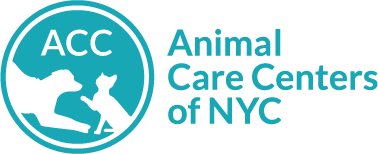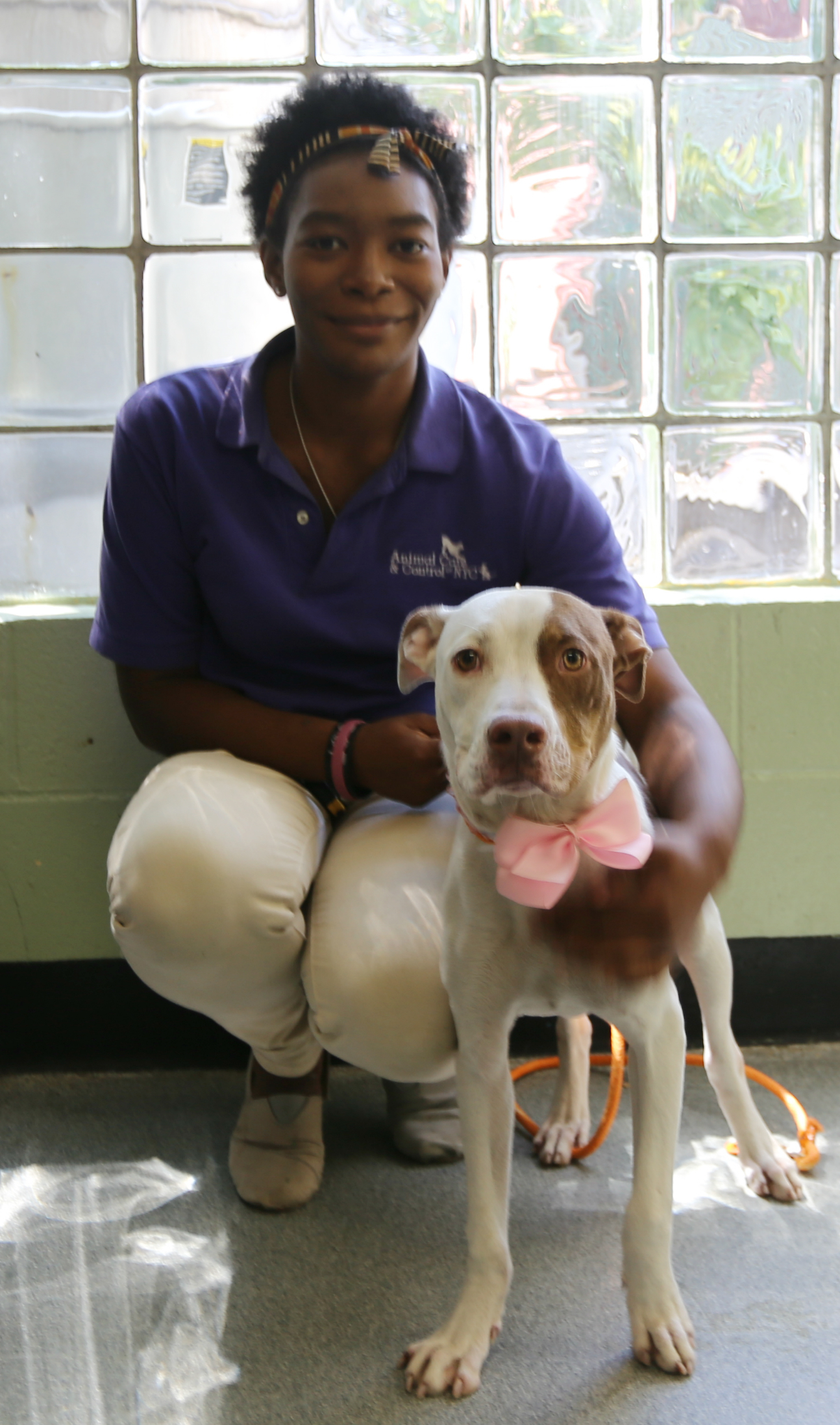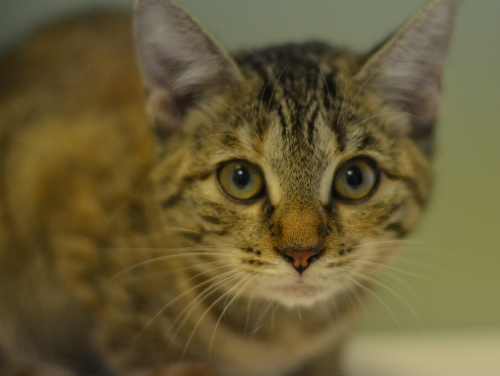|
As NYC's only animal welfare organization that accepts every single animal that is brought to us, Animal Care & Control of NYC (AC&C) takes in approximately 30,000 animals each year, including owner-surrenders, strays, animals from evictions, animals whose owners have passed, injured wildlife, and more. On July 1, AC&C launched an Admissions Department to focus on the intake process and how we can provide more meaningful service to NYC residents and their pets. AC&C's new Admissions Counselors provide compassionate assistance to individuals seeking to surrender their pets, and offer alternative placement for owned animals whenever possible. Previously, AC&C’s Customer Care staff handled intakes at the lobby counter, along with many other duties. While they referred pet owners to third-party programs that can help people try to keep their pets, AC&C wanted to do more to help. Through our new Admissions department, Counselors now meet privately with individuals in private offices, and connect them with a variety of resources specific to their needs. Admissions Counselors are taking photos as well (previously assigned to our very busy Medical department), and are using high-quality cameras donated by HeARTs Speak to portray our animals in the best possible light. Aleah Simpson, formerly a Quality Assurance Assistant with AC&C, supervises the department and recently sat down for a Q&A.
Q: What's the purpose of the Admissions department? What's the goal?
The second goal of the Admissions department is getting as much quality information [about a pet who is ultimately surrendered to AC&C]. Studies show the best prediction of future behavior for the animal is their previous behavior, so the more information we get, the better chance we have of matching them with the perfect home.
Q: How does AC&C's Admissions department work other external organizations/partners? AC&C connects people with those resources? A: We have a list of external partners that we work with. We also work with the ASPCA; we have what's referred to as a Partners in Caring (PIC) grant, and this grant covers life-threatening emergency situations where the [animal] has a great prognosis. It's a case-by-case basis, so they interview the person to see if they're able to assist. Our Admissions Counselor will speak with the person, they'd call the PIC grant directly, and the counselor will try to help them with the paperwork. As soon as they're approved, they leave with the animal, without doing an intake. We also work with a group called Dogs on Deployment, for individuals who are being deployed in the military. We work with them so they can find a foster home for their dogs while they're being deployed. We've also worked with a few other organizations. For allergy sufferers we have a list of resources and tips you can use. We also give pet food or crates.
We also had an individual who adopted a cat from us four years ago. He said his cat was his best friend but he just lost his house. He didn't know where to go. We were able to work with Pet Help Partners to get him low-cost boarding. And he actually hugged the Admissions Counselor, it was really sweet.
Before, we would ask the client to sit down and fill out a pet profile and check these boxes that say, does your animal like this, does your animal like that, which is great because we need to collect the information. But sometimes individuals who own pets do not necessarily know what to look for in animal behavior. For example, a client came in [with] a Cocker Spaniel puppy [who was too much for him]. So we did the interview. The interview asks very specific questions about the animal: What does he do when you touch his food bowl? What does he do when he sees a dog? What does he do when he sees a cat that he knows, that he doesn't know? Instead of just asking [“is your pet] aggressive, friendly, not sure, shy,” we ask specifically for those behaviors. He said, "My dog is aggressive to children." And I said, "Okay, what behavior are you seeing?" It was a puppy, and the puppy's jumping up and down, loose body, wiggly, shaking a tail. [I asked] "So this behavior is aggressive?" and he said, "Yes." I taught him when dogs are aggressive, they're stiff, or when they're reacting to a situation, they become stiff. Loose, wiggly body like that--that's actually playful, soft. That was a great learning moment for him because he didn't know that, and he was afraid to actually let his dog go near kids because he thought the dog was going to bite them. If he would have just checked off a box that said aggressive, we would have been concerned for it in our Care Center [when he’s] actually a loose and wiggly dog. Q: On top of getting information from the owner, AC&C also does behavior exams. That's not your department, but you work with the Behavior Department? A: Very closely. That's a great thing. When they do those behavior assessments, they can actually go back and look at the detailed information we have from the home environment and see how much of this is really the dog's behavior and how much of it is just stress from being in the shelter, because animals' behavior does change when they're in a shelter. It's a very stressful environment. [It's] great information. We're glad to be able to provide it for the Behavior Department. They've done a lot of work, too, helping to train the Admissions staff in terms of noticing body language in dogs and cats and to be able to accurately describe that body language in our memos. Q: What are the most common reasons that you find people come to surrender their pets? A: In terms of specific reasons, it's usually housing situations, financial reasons, they no longer can afford to care for their pet, whether it's medical needs or things like that. Also, allergies is a big one. And animal behavior. The overall situation I think is just misinformation and lack of resources. I'm a firm believer, personally, that education is the way to resolve all the animal welfare issues we have in our society. A lot of it is just educating people on how to properly care for their pet, how to properly train their pet, what to do when their pet is doing a behavior that they do not like. Also, just giving them access to low-cost resources, letting them know what vet care is important. [In] a lot of situations animals come to us for those health issues that could have been prevented if the animal was spayed or neutered at a younger age or given a quality diet or just exercise. We had another client who came in [whose] dog kept destroying the house. And I [asked] "What do you do after he chews up your furniture?" And she [said] "Well, I point to it, and I tell him no, do not do this, and he keeps doing it. I yell and yell and yell, do not do this, bad, bad dog." But [she's] pointing to the object, and so I explained to her that the dog didn't understand when you point to this object, that you're saying not to do it. All he sees is, she's pointing to this object and yelling at me. I don't know why she's yelling at me. This makes me really sad. And so we went over how to properly train dogs not to chew on things, we talked about the leave it command, the drop it command. And she went back, tried it, and she came back and said it worked.
A: They can email us: admissions@nycacc.org. That will send the email to every Admissions Counselor, so [we] can respond to you quickly. They can always come in as well. If they want to avoid all that, we can do our counseling via email. Q: How many animals has the Admissions department been able to help since its launch on July 1? A: From the launch on July 1 through December, we wanted to keep at least 150 animals from being surrendered to AC&C. We met that goal in early August. As of Monday [August 25] we have prevented 190 animals from going to Animal Care & Control. These are animals [whose] people came in, they wanted to surrender their pets, and then they left with their pets. Q: Do you have a new goal now for the rest of the year? A: By the end of December AC&C wants to prevent at least 350 animals from being surrendered. [Editor’s Note: If surrender is inevitable, AC&C’s Admissions department can also work with individuals to defer intakes, allowing AC&C to seek placement for animals while they remain in the comfort of their homes. In addition, AC&C can match certain types of pets directly with private rescue organizations that may be able to secure placement for an animal instead of first entering AC&C. These deterred intakes are not included in the above goal]. Q: Can you tell me a little about yourself? How did you get involved with animal sheltering? A: I've always wanted to work with animals, ever since I was a child. When I was 16 I had my first job actually working with animals, it was in a dog daycare. That's where I learned more about dog behavior. I would also volunteer at the animal shelters in Atlanta. After that, when I went to college I thought I wanted to be a vet at first. So I took pre-vet courses. Then I started volunteering with rescue. I volunteered at the local SPCA and with [Cornell’s vet school] research department, socializing animals that they were going to place for adoption. It taught me behavior modification for dogs, cats, rabbits, and horses, and it also [made] me realize that I wanted to focus more on rescue. When I graduated I moved back to Atlanta and I worked for Atlanta Humane Society for two years as an Adoption Counselor. That's where I really got my passion for educating people about animal welfare. |
|
|
 |
 |
|
 |
||
 Q&A With AC&C's Admissions Supervisor Aleah Simpson
Q&A With AC&C's Admissions Supervisor Aleah Simpson We're also doing fabulous intake photos so that everyone can see and give the animals the best chance possible of placement. And [we're] also just keeping them stress-free, we want to make the interaction really, really positive, so that we're setting them up for success in the shelter.
We're also doing fabulous intake photos so that everyone can see and give the animals the best chance possible of placement. And [we're] also just keeping them stress-free, we want to make the interaction really, really positive, so that we're setting them up for success in the shelter.
 Q: Unfortunately, you're not going to be able to help every owner. And there are probably some cases where it's better for the animal that they come to AC&C. When you do take an animal in, what happens then?
Q: Unfortunately, you're not going to be able to help every owner. And there are probably some cases where it's better for the animal that they come to AC&C. When you do take an animal in, what happens then?
 Q: What is the best way for people to reach the Admissions staff?
Q: What is the best way for people to reach the Admissions staff?